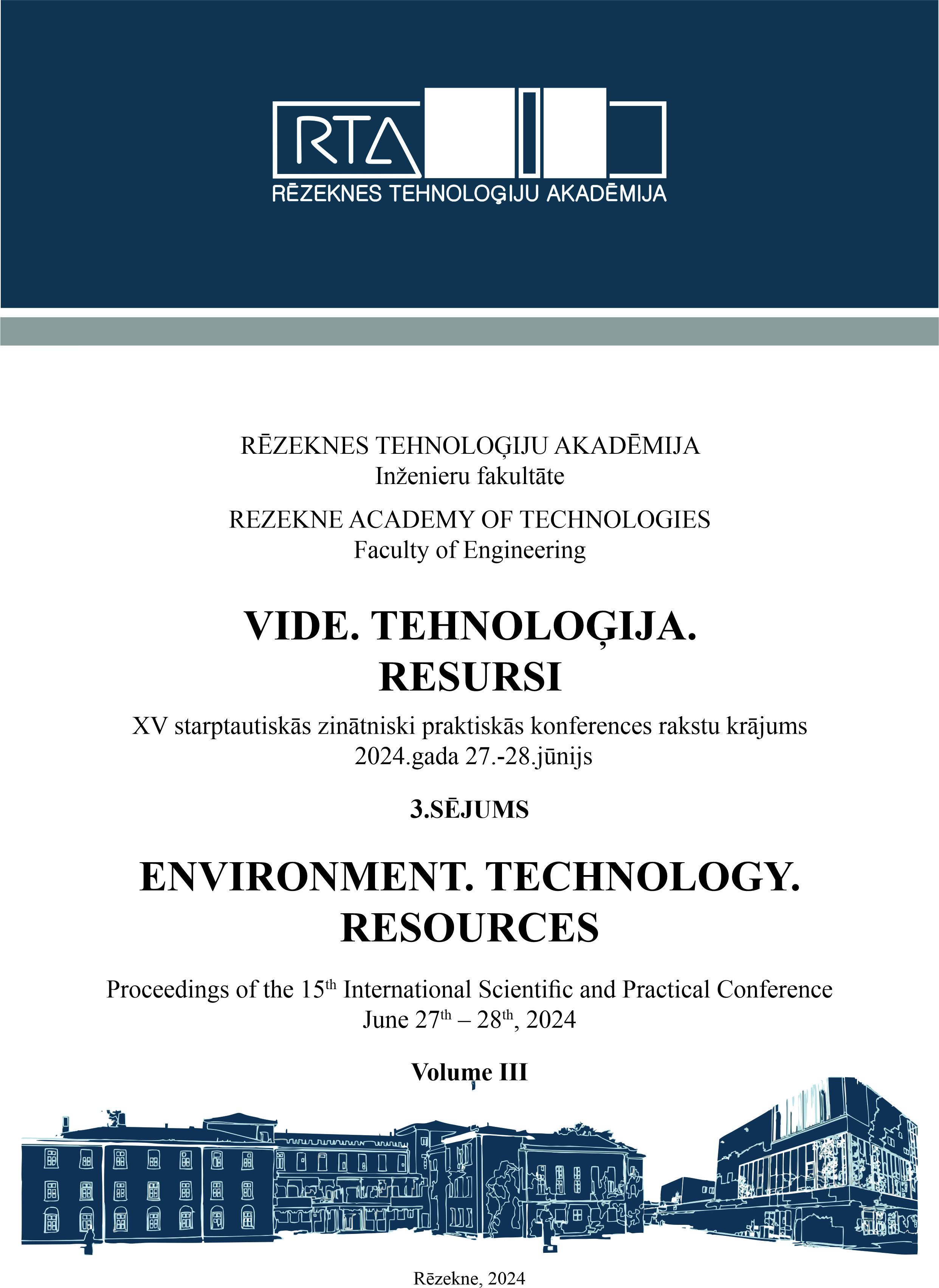COMPUTER MODELING AND SIMULATION OF MECHANISMS USING FREE AND OPEN-SOURCE SOFTWARE
DOI:
https://doi.org/10.17770/etr2024vol3.8143Keywords:
open-source software, GNU Octave, four-bar linkage, CAD softwareAbstract
The present paper aims to examine how free and open-source software (FOSS) can be applied in the processes of computer modeling and simulations of mechanisms. Successful examples of the application of free software for CAD (computer-aided design) and simulation of mechanisms are presented and discussed. A case study is used to exemplify how engineering tasks, related to position function determination, first transfer function and output link’s velocity of a four-bar linkage, can be resolved with the help of an open-source scientific programming language – GNU Octave. Recommendations about the applicability of free open-source software in mechanism analysis are provided.
References
R. Stallman, “The Free Software Movement and the GNU/Linux Operating System”, 22nd IEEE International Conference on Software Maintenance, 2006.
“License information,” [Online]. Available: https://www.debian.org/legal/licenses/. [Accessed: Feb. 19, 2024].
“Cooperatives Europe developing open source software,” Nov. 25, 2019. [Online]. Available: https://coopseurope.coop/news_article/coopseurope-developing-open-source-software/. [Accessed: Feb. 19, 2024].
M. Santos, “The “so-called” UGC: an updated definition of user-generated content in the age of social media,” Online Information Review, Vol. 46, 2022.
J. Simpson, “Expanding Human Capabilities Through the Adoption and Utilization of Free, Libre, and Open Source Software”, University of the Incarnate Word, 2014.
R. Stallman, “Free software, free society : selected essays of Richard M. Stallman”, GNU Press, 2002. [E-book] Available: www.gnupress.org.
D. A. Tamburri, F. Palomba, A. Serebrenik and A. Zaidman, “Discovering community patterns in open-source: a systematic approach and its evaluation,” Empirical Software Engineering, Vol. 24, 2019, pp. 1369 – 1417.
R. Rothwell, “Creating wealth with free software,” Free Software Magazine, 2008.
“How much are open-source developers really worth? Hundreds of billions of dollars, say economists,” Feb 8, 2021. [Online]. Available: https://www.zdnet.com/article/how-much-are-open-source-developers-really-worth-hundreds-of-billions-of-dollars-say-economists/. [Accessed: Feb. 20, 2024].
H. Hamidovic, A. Buljubasic, M. Djulic, E. Sejic, “BENEFITS AND RISKS OF FOSS STRATEGIES”, Conference: DIEC 2022, 2022.
M. Heron, V. Hanson and I. Ricketts, “Open Source and Accessibility: Advantages and Limitations”, Journal of Interaction Science, Vol. 1, 2013.
P. Masarati, M. Morandini and P. Mantegazza, “An Efficient Formulation for General-Purpose Multibody/Multiphysics Analysis”, Journal of Computational and Nonlinear Dynamics, Vol. 9, 2014.
F. Machando, N. Malpica and S. Borromeo, “Parametric CAD modeling for open source scientific hardware: Comparing OpenSCAD and FreeCAD Python scripts”, PLOS ONE, Vol. 14, 2019.
“FreeCAD-MBDyn dynamics workbench,” [Online]. Available: https://gitlab.com/josegegas/freecad-mbdyn-dynamics-workbench. [Accessed: Feb. 20, 2024].
“Blendyn,” [Online]. Available: https://github.com/zanoni-mbdyn/blendyn. [Accessed: Feb. 20, 2024].
“Blendyn Development,” [Online]. Available: https://github.com/BryanGsep/Blendyn-Development/blob/main/README.md. [Accessed: Feb. 20, 2024].
A. Cocco, S. Mazzetti. P. Masarati, S. Hoff and B. Timmerman, “Numerical Whirl–Flutter analysis of a tiltrotor semi‑span wind tunnel model”, CEAS Aeronautical Journal, Vol. 13, 2022, pp. 923 – 938.
C. Caccia and P. Masarati, “Coupling multi-body and fluid dynamics analisys with preCICE and MBDyn”, 9th edition of the International Conference on Computational Methods for Coupled Problems in Science and Engineering, 2021.
“MBDyn Tutorial,” [Online]. Available: https://www.sky-engin.jp/en/MBDynTutorial/. [Accessed: Feb. 20, 2024].
H. Medina, A. Beechook, J. Saul, S. Porter, S. Alexandrova and S. Benjamin, “Open source Computational Fluid Dynamics using OpenFOAM,” Light Aircraft Design: Methods and Tools 2015, London, 2015.
H. Jasak,, “OpenFOAM: Open source CFD in research and industry”, International Journal of Naval Architecture and Ocean Engineering, Vol. 2, 2009, pp. 89 – 94.
“OpenFOAM+ParaView_flow_simulation.png,” [Online]. Available: https://upload.wikimedia.org/wikipedia/en/e/e9/OpenFOAM%2BParaView_flow_simulation.png. [Accessed: Feb. 22, 2024].
“Linkage Mechanism Designer and Simulator,” [Online]. Available: https://blog.rectorsquid.com/linkage-mechanism-designer-and-simulator/. [Accessed: Feb. 22, 2024].
J. Eaton, “GNU Octave and reproducible research”, Journal of Process Control, Vol. 22, 2012, pp. 1433 – 1438.
Downloads
Published
Issue
Section
License
Copyright (c) 2024 Mihail Zagorski, Radoslav Miltchev, Mario Semkov

This work is licensed under a Creative Commons Attribution 4.0 International License.



